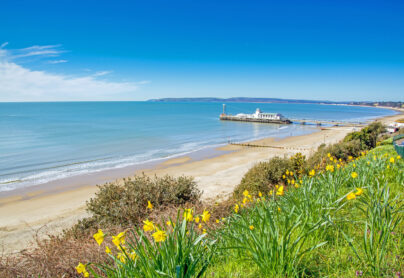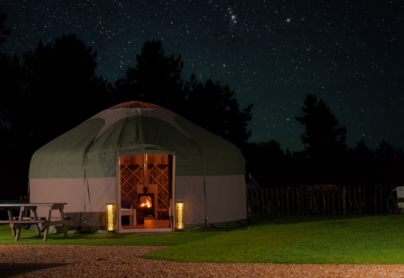
Start at the main gates:
On your left is the lodge built in 1905. The house is now a grade 2 Listed building.
The Poole area was heavily bombed just before D-Day and if you look carefully at the side of the lodge you can see shrapnel holes near to the top window overlooking the shop. No humans were killed by this bomb but a number of cows did suffer fatal injuries.
Main Gates: It is reported that during the 1939-1945 war the main gates were removed and buried somewhere on the estate to avoid being melted down and used for munitions. It is believed that the original owl was lost at this time and was replaced with the clay one you see at the top today. All the cast iron work has been done by hand.
Turn right and follow Dorchester road towards the village: This section of road was diverted in 1907 to skirt the Manor Park, thus making it more private and extensive. The metal railings were erected along the side of the road. The intension was to develop a deer park but Sir Elliott Lees died before he was able to complete the project. The original road runs from the bottom of the caravan park to the left of the Craft Centre.
On your right the next building you come to is the School: The first written records of the National School or Church School (as it was called) appear in The Log Book of 1863 although records show that £45 was paid to the National Society in 1839 to promote the education of poor children between the ages of 4-12 years in the village. Reasons for absenteeism in 1863 were recorded as: haymaking, sheep shearing, brick making and acorn picking! What are today’s excuses?!
The Next building on your right is the church: The church has no name. The early church was destroyed by fire and could have been mediaeval. The building you see today was built in 1831-33. Look carefully at where the nave and sanctuary join and you can see a Mass Dial or Scratch Dial (rather like a sun dial) very rare and believed to date back to around 1500. The old vicarage is directly opposite.
Continue on until you come to the little Button Shop: In 1901, Lady Florence Lees tried to revive the cottage industry of making buttons for sale in the button shop. However due to the war, most ladies were engaged in land work and after only making two pound profit in 1914 the venture was wound up. Please pop in as it is now an antiques shop run by Mrs Johns.
Continue along the road until you come to the village hall: Sir Elliott Lees was Lord of the manor and in 1901, as thanks for the safe return of all 30 of his troops from the Boar war he offered a choice of a village hall or water pumped to their houses. The village hall was built!
Continue until you come to Lytchett Minster Chapel today known as the United Reform Church: The present church was built in 1819. Next door is the Manse, which was the residence of the officiating minister. It was sold in 1977 and is now a family home.
Continue to the end of the road where you cross over to the Baker’s Arms: It is a cob building (mud and straw), and brick with a thatch roof. Attached to the pub was a small cottage used as a bakery; possibly the reason why it is called the Baker’s Arms. A local story handed down from generation to generation is how St Peter’s wife was found in the arms of another man. A shameful case resulting in divorce as she confessed to being found in the bakers arms! Relax and have a pint.
Follow the footpath back towards the camp site and on your right you will see Laundry cottage: As its name implies this was the laundry for the Manor house. Mrs Charlie Toop lived and worked at the Laundry Cottage. This remarkable lady lived until she was 92 and her later years were spent in one of the four little old people’s houses erected in the centre of the village in memory of four of the Lees family.
Continue along the road and just before St Peters Finger Pub you will see the village pound: This was where stray animals were kept until claimed by their owners, when a fee would have to be paid for their release. The word “pound” originates from the word “impound”. It is possible that the village stocks were also situated somewhere in this area as wrapping clamps and ironwork was bought for them in 1752.
St Peters Finger: – It is possible that it gets its name from an early Christian Missionary who preached from here to the Pagan British. It is the only pub with this name in the country. Evidence suggests that there were two houses on this site as far back as 1505.
Follow Dorchester Road back to the site.
Distance from us:

Book your springtime escape to Dorset
READ MORE >
Ben and Alice provide a guided tour of the new Star-gazing Yurts
READ MORE >
Take part in a range of activities across Dorset this Easter!
READ MORE >